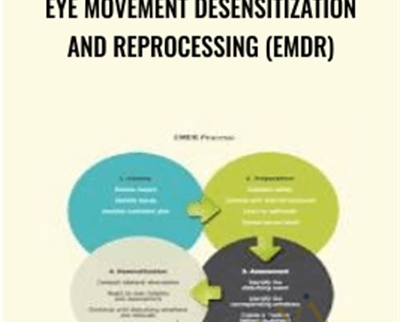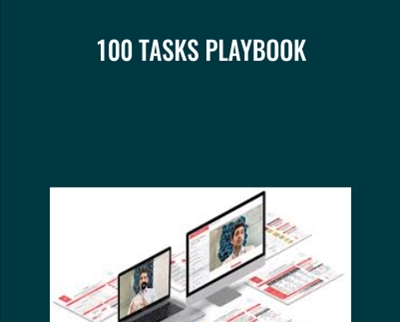Buy Dr Heinz M. Kabutz – Dynamic Proxies in Java Course at GBesy. We actively participate in Groupbuys and are committed to sharing knowledge with a wider audience. Rest assured, the quality of our courses matches that of the original sale page. If you prefer, you can also buy directly from the sale page at the full price (the SALEPAGE link is directly provided in the post).
 Of all the things that we could learn this month, why dynamic proxies?
Of all the things that we could learn this month, why dynamic proxies?
Back in 1996, we could learn the entire Java ecosystem in a week with Bruce Eckel’s “Thinking in Java”.
Fast-forward to 2020 and the volume of information is overwhelming.
Dr Heinz M. Kabutz – Dynamic Proxies in Java course with special price just for you: $197 $45

Dr Heinz M. Kabutz – Dynamic Proxies in Java
Of all the things that we could learn this month, why dynamic proxies?
Back in 1996, we could learn the entire Java ecosystem in a week with Bruce Eckel’s “Thinking in Java”.
Fast-forward to 2020 and the volume of information is overwhelming.
Java is still quite easy to learn, especially if we focus on the most essential tools. Start with the syntax, then object-orientation, flow control, collections and Java 8 streams. Design patterns hold everything together.
But there is more, much more.
To become a true Java Specialist, we need to also master the underpinnings of this great platform. How else can we develop systems that take advantage of the power of Java?
Dynamic proxies are such a tool. We can save thousands of lines of repetitive code with a single class. By taking a thorough look at how they work, we will recognize good use cases for them in our systems.
Dynamic proxies are not an everyday tool. They may come in handy only half a dozen times in our career. But when they fit, they save us an incredible amount of effort. I once managed to replace over half a million code statements with a single dynamic proxy. Powerful stuff.
This course is for intermediate to advanced Java programmers who want to get to “guru” status. It is not suitable for beginners in Java.
Every section has tough exercises for us to solve, together with walkthroughs.
We hope you enjoy this course as much as I enjoyed creating it for you!
Let the dynamic proxy games begin!
Heinz
Your Instructor
Dr Heinz M. Kabutz
Heinz Kabutz is the author of The Java Specialists’ Newsletter, a publication enjoyed by tens of thousands of Java experts in over 145 countries. His book “Dynamic Proxies (in German)” was #1 Bestseller on Amazon.de in Fachbücher für Informatik for about five minutes until Amazon fixed their algorithm. Thanks to a supportive mother, he has now sold 5 copies.
Heinz’s Java Specialists’ newsletter is filled with amusing anecdotes of life on the Island of Crete. He is a popular speaker at all the best Java conferences around the world, and also at some of the worst. He teaches Java courses in classrooms around the world, where his prime objective is to make absolutely sure that none of his students fall asleep. He is not always successful.
Course Curriculum
Dynamic Proxies in Java
Resources
Exercise files and slides
Dynamic Proxies in Java Mini-Book
Playground files and solved exercises
Welcome
0.1. Why I wrote this book (and course) (3:05)
0.2. Hearty welcome (2:12)
0.3. Course author (1:23)
0.4. Comfort and Learning (1:30)
0.5. How to ask questions (1:25)
0.6. Exercises (1:57)
0.7. Exercises in IntelliJ 2020.1 (or later) (2:12)
0.8. History of dynamic proxies (2:13)
0.9. Big Win (3:10)
0.10. Infrastructure Code (1:01)
0.11. Risk of dynamic proxies (3:22)
0.12. What will we learn? (0:59)
0.13. Java version (1:17)
0.14. Shallow vs deep reflection (2:25)
0.15. Book sample code (1:10)
0.16. How code is modularized (2:28)
0.17. Enjoy! (0:21)
0.18. Exercise 0.1 (2:13)
Design Patterns Cousins
1.0. Design Patterns Cousins (0:36)
1.0.1. Christopher Alexander and Design Patterns (2:42)
1.0.2. What’s in a name? (3:10)
1.0.3. Four Cousins (1:14)
1.1.1. Proxy Intent (1:32)
1.1.2. Proxy Structure (1:20)
1.1.3. Proxy Variations (1:31)
1.1.4. Proxy Exercises (1:04)
1.2.1. Adapter Intent (1:24)
1.2.2. Adapter Structure (2:25)
1.2.3. Object Adapter vs Proxy (1:31)
1.2.4. Adapter Exercises (0:23)
1.3.1. Decorator Intent (3:18)
1.3.2. Decorator Structure (1:18)
1.3.3. Decorator OutputStream (2:27)
1.3.4. OutputStream Objects (1:00)
1.3.5. OutputStream Code Samples (3:24)
1.3.6. Decorator vs Proxy (1:13)
1.3.7. Decorator Exercises (0:32)
1.4.1. Composite Intent (0:50)
1.4.2. Composite Structure (0:59)
1.4.3. Composite vs Proxy (0:25)
1.4.4. Merging and reducing return values (0:24)
1.4.5. (Ab)using dynamic proxies to implement all four cousins (0:16)
1.4.6. Composite Exercises (0:30)
1.5.1. Chain of Responsibility Intent (0:58)
1.5.2. Chain of Responsibility Sample Code (2:31)
1.5.3. Chain of Responsibility Summary (0:28)
1.5.4. Chain of Responsibility Pitfalls (0:19)
1.5.5. Chain of Responsibility Exercises (0:17)
Handcrafted Proxies
2. Handcrafted proxies (1:47)
2.1.1. Virtual Proxy (1:04)
2.1.2. CustomMap Interface (0:34)
2.1.3. CustomHashMap Class (1:46)
2.1.4. VirtualCustomMap Class (1:58)
2.1.5. CustomMap Class Diagram (1:40)
2.1.6. Using VirtualCustomMap (1:47)
2.1.7. Sizeof in Java (1:24)
2.2. Remote Proxy (2:06)
2.2.1. RealCanada (0:41)
2.2.2. Spark Framework (1:16)
2.2.3. Service Publisher with Spark (0:48)
2.2.4. Service Publisher with Jetty (0:48)
2.2.5. Remote Proxy CanadianEmbassy (2:03)
2.2.6. Canada Class Diagram (0:44)
2.2.7. Heinz Applying for Canadian Visa (0:28)
2.3. Protection proxy (1:24)
2.3.1. ConcurrentTest for testing thread safety in CustomMap (2:33)
2.3.2. Code walk-through and demo for ConcurrentTest (5:12)
2.3.3. Protection Proxy to the rescue (0:16)
2.3.4. SynchronizedCustomMap (0:29)
2.3.5. Synchronized or ReentrantLock? (1:49)
2.3.6. SynchronizerTestDemo (0:47)
2.3.7. Unmodifiable Map (1:05)
2.3.8. UnmodifiableCustomMap (1:25)
2.3.9. UnsupportedOperationException (2:03)
2.4. Cascaded Proxies (0:40)
2.4.1. More flexible proxy structure (0:27)
2.4.2. Cascading proxies code (1:14)
2.5. equals() in proxies (1:18)
2.5.1. IDE-generated equals() in CustomHashMap (1:46)
2.5.2. How AbstractMap implements equals() (1:09)
2.5.3. New CustomHashMap.equals() method (Broken contract) (1:58)
2.5.4. Proxy’s equals() delegates call (0:24)
2.5.5. Correct CustomHashMap.equals() (2:52)
2.6.1. Exercise 2.1. Problem Statement (3:23)
2.6.2. Exercise 2.1. Walkthrough (7:43)
2.6.3. Exercise 2.2. Problem Statement (16:13)
2.6.4. Exercise 2.2. Walkthrough (24:03)
2.7. Summary (0:47)
Dynamic Proxies
3. Dynamic Proxies (0:46)
3.0.1. Avoid Copy and Paste (3:53)
3.1. Proxy.newProxyInstance() (3:55)
3.1.1. IllegalArgumentException from Wrong ClassLoader (0:45)
3.1.2. Correct ClassLoader Specified (1:13)
3.1.3. Java Platform Module System (4:26)
3.1.4. InvocationHandler (1:38)
3.2. LoggingInvocationHandler (1:13)
3.2.1. invoke() Method for LoggingInvocationHandler (3:51)
3.2.2. toString() Prints Methods with Args (0:49)
3.2.3. Demo of LoggingInvocationHandler (1:21)
3.3. Dissecting a Dynamic Proxy (0:28)
3.3.1. Dynamic Proxy Class Name (1:03)
3.3.2. Decompiling $Proxy0 (0:48)
3.3.3. $Proxy0 Code Walkthrough (6:41)
3.3.4. How Does $Proxy0 Work? (1:29)
3.3.5. EscapeAnalysisTest of Arguments Array (4:45)
3.3.6. Turbo-boosting Reflection Methods (1:41)
3.3.6.1. TurboBoosterTest Demo (6:27)
3.3.6.2. MethodTurboBooster Code Review (2:02)
3.4. Recasted Exceptions (0:15)
3.4.1. Unexpected Exceptions Causing Issues (0:30)
3.4.2. RecastingExceptionsBroken (1:31)
3.4.3. Unwrapping InvocationHandler (1:30)
3.4.4. RecastingExceptionsFixed (0:26)
3.5. Proxies Facade (1:01)
3.5.1. Proxies.castProxy() (1:16)
3.5.2. simpleProxy() (0:53)
3.5.3. RealISODateParser (0:50)
3.5.4. Using Proxies Facade (1:17)
3.6. Virtual Dynamic Proxy (1:04)
3.6.1. Proxies Facade virtualProxy() (0:26)
3.6.2. Creating Virtual Proxy (1:08)
3.6.3. Company and MoralFibre (1:24)
3.6.4. CompanyTest (0:59)
3.7. Synchronized Dynamic Proxy (1:02)
3.7.1. Proxies Facade synchronizedProxy() (0:17)
3.7.2. SynchronizedTest (0:51)
3.8. Cascading Dynamic Proxies (1:12)
3.9. EnhancedStream (1:57)
3.9.1. EnhancedStream Code Review (1:42)
3.10. Dynamic Proxy Restrictions (0:28)
3.10.1. Interfaces Only (0:36)
3.10.2. UndeclaredThrowableException (0:32)
3.10.3. Return Types Have to be Correct (0:58)
3.10.4. Naming Mysteries (1:33)
3.10.5. Deeper Call Stacks (0:39)
3.10.5.1. Leaky Abstractions (1:59)
3.10.6. Shared Proxy Classes (1:47)
3.11. Performance (3:00)
3.11.1. Model for Benchmark using JMH (4:05)
3.11.2. Benchmark increment() Results (1:37)
3.11.3. Benchmark consumeCPU() Results (0:50)
3.11.4. Summary of Benchmark Results (0:40)
3.12. Exercises (0:15)
3.12.1. Exercises 3.1. Problem Statement (0:24)
3.12.2. Exercises 3.1. Walkthrough (1:30)
3.12.3. Exercises 3.2. Problem Statement (2:13)
3.12.4. Exercises 3.2. Walkthrough (8:31)
Dynamic Decorators
4. Dynamic Decorator (0:36)
4.0. Decorator Structure (0:36)
4.1. Filtering for Immutability (2:53)
4.1.1. ImmutableCollection (1:14)
4.1.2. HandcodedFilter (1:04)
4.1.3. MutableCollection (0:22)
4.1.4. UML Diagram (1:04)
4.1.5. HandcodedFilter Demo (1:44)
4.2. FilterHandler (4:52)
4.2.1. FilterHandler Class (4:54)
4.2.2. Proxies Facade Gets filter() Method (1:43)
4.2.3. Dynamic Filter Demo (1:07)
4.2.4. What Happened? (2:24)
4.3. VTable (0:44)
4.3.1. VTable Overview (2:05)
4.3.2. ParameterTypesFetcher (4:48)
4.3.3. MethodKey (4:52)
4.3.4. VTable (3:57)
4.3.4.1. VTable put() and findIndex() (7:38)
4.3.4.2. VTable.getDefaultMethodHandle() (6:08)
4.3.4.3. Turbo-Boosting Methods in VTable (0:57)
4.3.4.4. VTable.lookup() and stream() (3:41)
4.3.5. VTable.Builder (19:03)
4.3.6. VTables Facade (1:39)
4.3.7. VTable Summary (0:22)
4.4. ChainedInvocationHandler (5:41)
4.4.1. UnhandledMethodException (0:44)
4.4.2. VTableHandler (1:48)
4.4.3. VTableDefaultMethodHandler (3:39)
4.4.4. UnifiedInvocationHandler (6:37)
4.5.1. Exercise 4.1. Problem Statement (0:48)
4.5.2. Exercise 4.1. Walkthrough (2:11)
4.5.3. Exercise 4.2. Problem Statement (3:32)
4.5.4. Exercise 4.2. Walkthrough (13:30)
Dynamic Object Adapter
5. Dynamic Object Adapter (0:30)
5.0.1. Singer and Rapper (0:59)
5.0.2. Class Adapter (1:12)
5.0.3. Object Adapter (1:21)
5.1. Better Collections (0:12)
5.1.1.1. Generics Type Erasure (2:31)
5.1.1.2. Demo of ArrayList (2:17)
5.1.1.3. Covariant Return Types (2:44)
5.1.2.1. BetterArrayList (1:33)
5.1.2.2. Demo of BetterArrayList (1:00)
5.1.3.1. BetterCollection Interface (1:24)
5.1.3.2. BetterConcurrentSkipListSet (0:34)
5.1.4.1. Object Adapter Pattern (1:16)
5.1.4.2. BetterCollectionObjectAdapter (1:23)
5.1.4.3. Demo of BetterCollectionObjectAdapter (0:24)
5.1.4.4. What if we want to make a better Set, List, etc.? (0:51)
5.1.5.1. ObjectAdapterHandler (1:53)
5.1.5.2. Proxies.adapt() (1:43)
5.1.5.3. BetterCollectionFactory (2:22)
5.1.5.4. Demo of Dynamic Object Adapter (1:15)
5.2.1. Dynamic Object Adapter Restrictions (1:09)
5.2.2. AdapterPuzzle1 (3:45)
5.2.3. AdapterPuzzle2 (1:07)
5.3. Performance (0:28)
5.3.1. Benchmark (3:19)
5.3.2. JMH Benchmark Code (6:21)
5.3.3. Benchmark size() Results (3:14)
5.3.4. Benchmark toArray() Results (4:26)
5.3.5. Benchmark forEachFiltered() Results (6:22)
5.4.1. Exercise 5.1. Problem Statement (1:51)
5.4.2. Exercise 5.1. Walkthrough (5:21)
5.4.3. Exercise 5.2. Problem Statement (1:16)
5.4.4. Exercise 5.2. Walkthrough (5:47)
5.4.5. Exercise 5.3. Problem Statement (1:24)
5.4.6. Exercise 5.3. Walkthrough (11:07)
Dynamic Composite
6. Dynamic Composite (3:21)
6.0.1. Composite Structure (1:12)
6.0.2. Visitor Pattern (1:06)
6.0.3. add() and remove() in Component? (5:32)
6.1. Mailing List (3:01)
6.1.1. Contact and Person (0:55)
6.1.2. DistributionList (1:36)
6.1.3. Contact Class Diagram (1:18)
6.1.4. Let’s Build a Mailing List (1:12)
6.1.5. Mailing List Object Graph (0:28)
6.1.6. Composite Classes Look Similar (0:34)
6.1.7. BaseComponent (0:51)
6.1.8. Contact extends BaseComponent (0:24)
6.1.9. BaseComponent Class Diagram (0:48)
6.2. CompositeHandler (0:53)
6.2.1. CompositeHandler Constructor (1:47)
6.2.2. Matching add() and remove() methods (1:09)
6.2.3. requiresAllInterfaces() (1:42)
6.2.4. addChildMethods() (7:02)
6.2.5. UncheckedException (1:08)
6.2.6. mapFunction() (2:09)
6.2.7. map and reduce (3:53)
6.2.8. Reducer.PROXY_INSTANCE_REDUCER (0:44)
6.2.9. Merging final result and unwrapping UncheckedException (0:28)
6.2.10. CompositeHandler summary (0:13)
6.2.11. Proxies.compose() (1:10)
6.2.12. Dynamic Composite Contact (0:56)
6.3. TeeAppendables (1:15)
6.3.1. Demo of TeeOutputStream (0:52)
6.3.2. OutputStreamComposite (0:26)
6.3.3. Interfaces of OutputStream and Writer (2:24)
6.3.4. TeeAppendable Handwritten Composite (1:39)
6.3.5. Making TeeAppendable into Writer (1:01)
6.3.6. Demo of TeeAppendable (2:27)
6.4. AppendableFlushableCloseable (1:44)
6.4.1. Composing Appendable Dynamically (0:58)
6.5.1. Exercise 6.1. Problem Statement (2:18)
6.5.2. Exercise 6.1. Walkthrough (9:44)
6.5.3. Exercise 6.2. Problem Statement (0:42)
6.5.4. Exercise 6.2. Walkthrough (3:22)
Conclusion
7. Conclusion (4:56)
Dr Heinz M. Kabutz|Dr Heinz M. Kabutz – Dynamic Proxies in Java|Dynamic Proxies in Java
Buy the Dr Heinz M. Kabutz – Dynamic Proxies in Java course at the best price at GBesy.. After your purchase, you will get access to the downloads page. You can download all the files associated in your order at here and we will also send a download notification email via your mail.
Unlock your full potential with Dr Heinz M. Kabutz – Dynamic Proxies in Java courses. our courses are designed to help you excel.
Why wait? Take the first step towards greatness by purchasing Dr Heinz M. Kabutz – Dynamic Proxies in Java courses today. We offer a seamless and secure purchasing experience, ensuring your peace of mind. With our trusted payment gateways, Stripe and PayPal, you can confidently complete your transaction knowing that your financial information is protected.
Stripe, known for its robust security measures, provides a safe and reliable payment process. With its encrypted technology, your sensitive data remains confidential throughout the transaction. Rest assured that your purchase is protected.
PayPal, a globally recognized payment platform, offers an additional layer of security. With its buyer protection program, you can feel confident in your purchase. PayPal ensures that your financial details are safeguarded, allowing you to focus on your learning journey.
Is it secure? to Use of?
- Your identity is completely confidential. We do not share your information with anyone. So it is absolutely safe to buy the Dr Heinz M. Kabutz – Dynamic Proxies in Java course.
- 100% Safe Checkout Privateness coverage
- Communication and encryption of sensitive knowledge
- All card numbers are encrypted using AES at relaxation-256 and transmitting card numbers runs in a separate internet hosting atmosphere, and doesn’t share or save any data.
How can this course be delivered?
- After your successful payment this “Dr Heinz M. Kabutz – Dynamic Proxies in Java course”, Most of the products will come to you immediately. But for some products were posted for offer. Please wait for our response, it might take a few hours due to the time zone difference.
- If this happens, please wait. The technical department will process the link shortly after. You will receive notifications directly by e-mail. We appreciate your wait.
What Shipping Methods Are Available?
- You will receive a download link in the invoice or YOUR ACCOUNT.
- The course link always exists. use your account to login and download the Dr Heinz M. Kabutz – Dynamic Proxies in Java course whenever you need.
- You only need to visit a single link, and you can get all the Dr Heinz M. Kabutz – Dynamic Proxies in Java course content at once.
- You can do your learning online. You can be downloaded for better results and can study anywhere on any device. Make sure your system does not sleep during the download.
How Do I Track Order?
- We always notice the status of your order immediately after your payment. After 7 days if there is no download link, the system will automatically complete your money.
- We love to hear from you. Please don’t hesitate to email us with any comments, questions and suggestions.
![GBesy [GB] GBesy [GB]](https://www.gbesy.com/wp-content/uploads/2023/05/gbesy-Logo-full-100.png)



 Purchase this course you will earn
Purchase this course you will earn 





Reviews
There are no reviews yet.